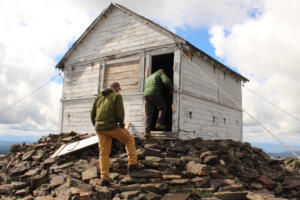By Kevin Gorman, Guest Columnist
Leaders in Congress recently reached an agreement with President Trump to temporarily re-open the full federal government. But the threat of another shutdown looms, and the shadow it casts is of concern not only to federal employees but the many who work and partner with federal agencies to protect, steward and preserve the Gorge.
Beneath the gamesmanship of the partial federal government shutdown is something anyone who pays attention to Gorge geology should understand: erosion. While nature intended for Gorge cliffs and stream beds to erode, the presence of the federal government in the Columbia Gorge was meant to stand firm in perpetuity. Government shutdowns, like the ones before and the ones to follow, eat away at the very foundation of Columbia River Gorge National Scenic Area and the impact is not only short-term hardships for federal employees and federal lands, but long-term ramifications for our nation’s most treasured lands.
Government shutdowns have a multiplier effect in places like the Columbia Gorge. When the National Scenic Area was created, it called for federal, state and local governments to work together and for non-profits and community organizations to jump in and engage. The overarching theme was that this was a national scenic area and the interests of the nation’s people must be preserved. That meant the federal government, particularly the U.S. Forest Service, was involved in all aspects of shaping this grand experiment.
The effect at times has been messy, controversial and hard. But the result is something no single government or entity could pull off: a swath of public and private land that has indeed been protected and even enhanced over three decades as population pressures have devastated other scenic locales around the country.
When this shutdown began in December 2018, the U.S. Fish & Wildlife Service was working with local governments and nonprofits such as Friends of the Columbia Gorge and the Lower Columbia River Estuary Partnership on a $22 million salmon restoration project at Steigerwald Lake. It will be the largest restoration project ever in the Gorge, employing up to 400 people and creating new habitat and new trails for people to enjoy. The shutdown put years of momentum in jeopardy and considering the restoration work can only occur in short windows of the year to avoid disrupting salmon spawning, the timeline for construction may be pushed out which also could impact funding.


